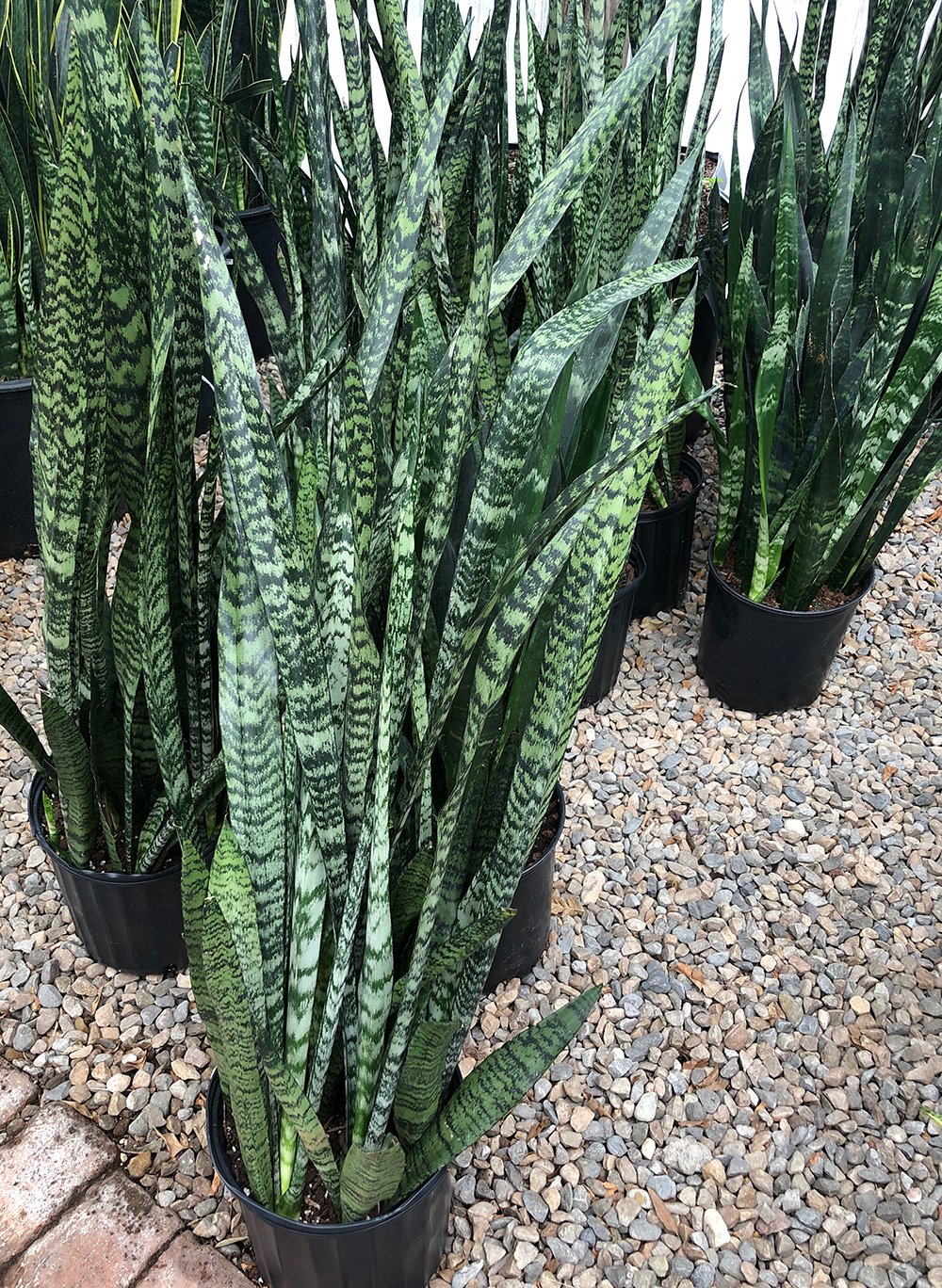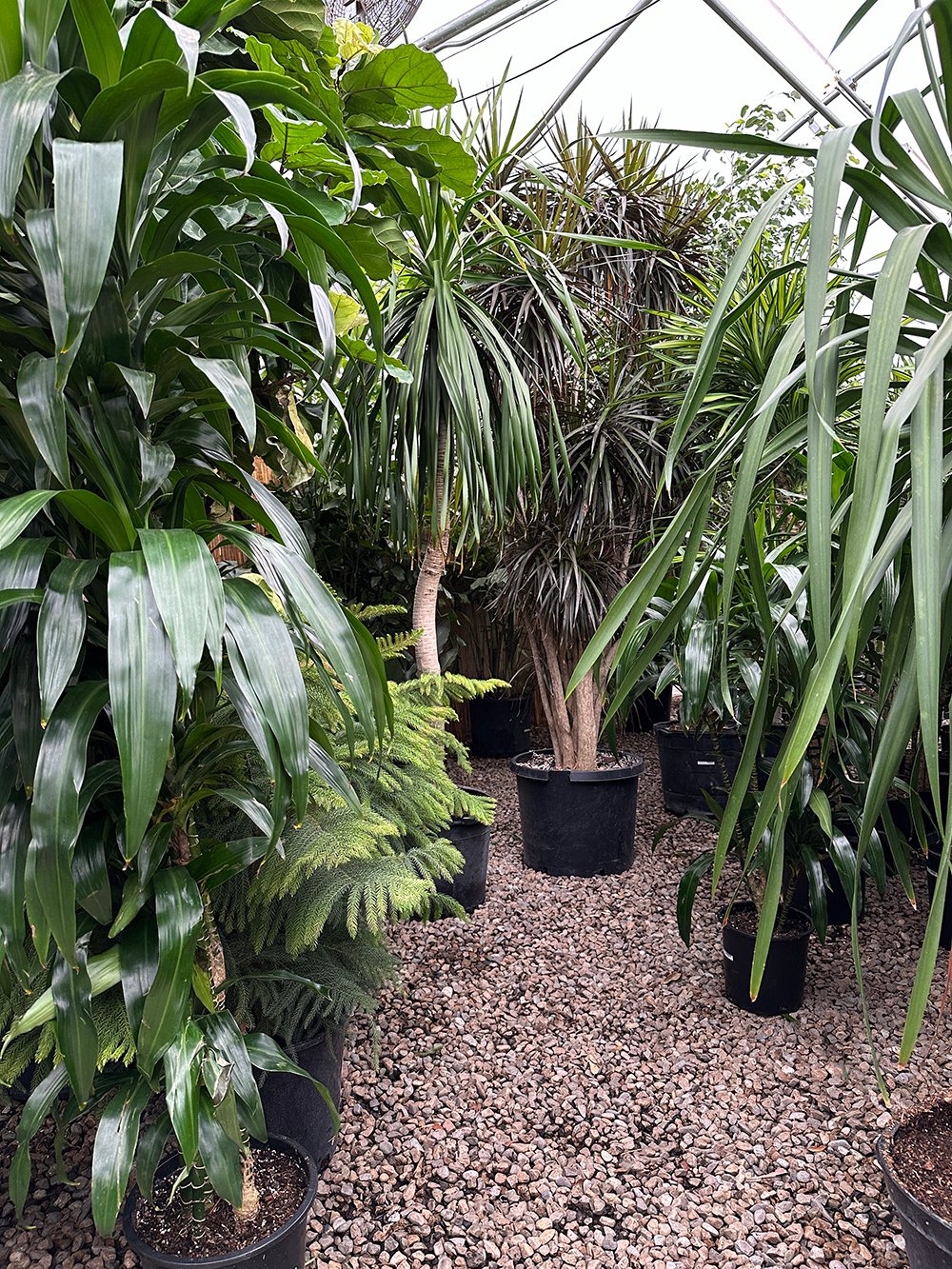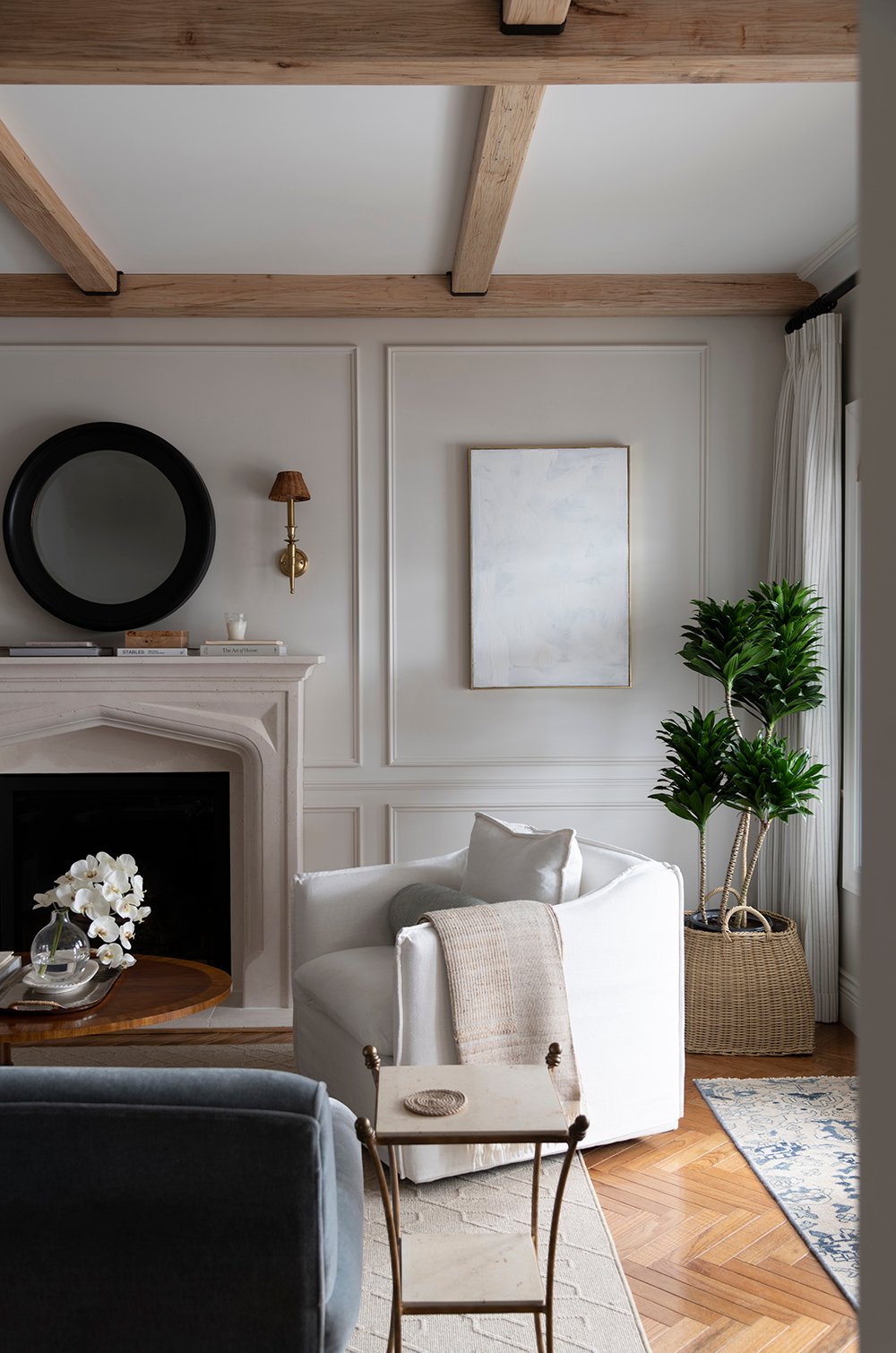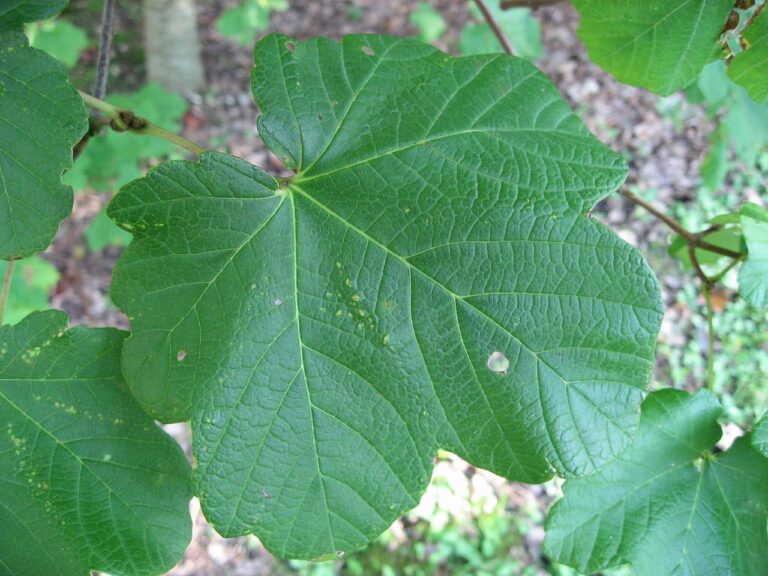Being that it’s spring, plants are on my mind! I like to think I have a green thumb, but ever since we moved into this house, I’ve had a hard time keeping indoor plants alive. My family has always grown plants, so I’m the girl I visited my favorite garden center to chat with the experts and give it one last go. What I found out was surprising and new information to me. Online articles had led me astray and I’d wasted my time and money these past few years. Click through to find out which easy indoor plants actually do well in low light, and to see which plant I chose to break my streak!
As I mentioned, I’d given up on indoor plants. As I kept killing expensive and beautiful plants, I switched to fake ones that looked real. I’ll admit that fake plants have their place, but I missed the benefits of taking care of a real plant. They clean the air, it’s fun to watch them grow, and they really do bring life into your home. Was it my efficient, light filtering windows? Did I suddenly lose my green thumb?.
Well, it turns out that the “low light” houseplants I read about don’t even survive in low light, let alone do well. Even in our living room, which faces south, my plants kept looking sad, and in the end, I gave them away to try to save them. They’re doing great at our friend’s cabin. Remember this makeover, the A-Frame Cabin Deck Makeover? They now live there and have tripled in size, which made me feel even worse about losing. Here’s what I learned….
I learned from talking to experts that there are really only a few types of plants that do well in low light indoors. While some online articles told me to get plants like ficus varieties, money trees, rubber trees, etc., the experts told me those would never do well in my home. Turns out, I was trying to keep plants alive in an environment that didn’t suit them. Multiple experts at my greenhouse echoed this sentiment:
A plant that can live in low light will only do so for a certain amount of time before it needs extra help (like time outside, a grow light, etc.). It won’t grow, it will often look unhappy or drop leaves, but it can survive with extra attention. I have tried these plants many times and they have always failed, so I chose not to try this direction again.
Inside, where there isn’t much light, a plant that does well in that environment will grow and look happy with just a spot near a window and the right amount of water. This seemed like a much safer and easier bet! Turns out, I was simply choosing the wrong plants.
Having plants in your home not only makes it look more inviting, but it can also improve air quality and your overall well-being. However, many people think that in order to grow plants indoors, you need bright sunlight streaming through the windows. But that’s not necessarily true! There are several varieties of indoor trees that actually thrive in low light conditions.
In this article we’ll discuss some key factors to consider when choosing low-light indoor trees as well as provide 9 recommendations for trees that do well in shady spots. We’ll also offer some care tips to keep your trees healthy and happy even when sunlight is scarce.
Why Low Light Trees?
If your home lacks bright sunny windows it may seem challenging to grow plants indoors. But there are certain varieties that not only tolerate low light, but actually prefer it. Here are some of the benefits of choosing these low light trees
-
Add greenery and oxygen without requiring supplemental lighting. Low light trees can photosynthesize and produce oxygen even with minimal sunlight from a window.
-
Clean the air. Indoor trees can help filter harmful pollutants like formaldehyde from the air.
-
Soften decor. The soft leaves and graceful branches of indoor trees help add natural beauty to any space.
-
Require less maintenance. Trees adapted to low light often need less frequent watering and can be slower growing.
-
Versatile placement. Position low light trees almost anywhere in your home without worrying about sunlight exposure.
How to Select Indoor Trees for Low Light
When choosing a tree for a low light spot, consider the following:
-
Native habitat – Tropical trees that grow underneath jungle canopies are used to filtered light and make good choices.
-
Leaf structure – Large, thin, or delicate leaves often require more light to photosynthesize. Look for small or thick leaves.
-
Growth rate – Slow growing varieties tend to do better in low light. Avoid fast growers that can get leggy.
-
Water needs – Some low light trees are more sensitive to overwatering, so opt for a drought tolerant variety.
-
Mature size – Make sure to choose a tree that fits the space; large trees struggle in small spots.
9 Best Low Light Indoor Trees
Here are some great options for indoor trees that can thrive with minimal sunlight:
1. Corn Plant (Dracaena fragrans)
The corn plant has long, arching leaves that give it a fountain-like appearance. Native to Africa, it can tolerate significant neglect and adapts well to low light levels indoors. Just provide moderately moist soil and average room temperatures. It can reach 6 feet tall when grown inside.
2. Dragon Tree (Dracaena marginata)
With sword-shaped leaves and woody stems, the dragon tree has an architectural appearance. It does well in a range of light conditions, from bright filtered light to quite shady spots. Allow the soil to dry out some between waterings to prevent root rot. It grows slowly but can eventually reach 8 feet tall.
3. Rubber Plant (Ficus elastica)
The rubber plant has large, oval green leaves and can reach upwards of 6 to 10 feet tall when grown indoors. It prefers bright filtered light but also tolerates low light. Allow the soil to dry out some before watering to prevent issues with rot. Avoid cold drafts below 60°F.
4. Cast Iron Plant (Aspidistra elatior)
As its common name suggests, the cast iron plant is nearly indestructible and does well in neglected, low light spots. It has long, pointed leaves and is very slow growing. Water when the top inch or two of soil is dry. It prefers cool temperatures around 60°F.
5. Parlor Palm (Chamaedorea elegans)
The parlor palm is a compact palm with long, feather-shaped fronds. It grows slowly, reaching 4 to 8 feet tall inside. While it prefers bright light, it can adapt to lower light conditions inside. Allow soil to dry out some between watering and mist leaves regularly to increase humidity.
6. Fiddle Leaf Fig (Ficus lyrata)
Fiddle leaf figs have very large, violin-shaped green leaves. They can survive in low light but do best with bright, filtered light. Provide very well-draining soil and allow it to dry out quite a bit between waterings to prevent root rot. Maintain warm temperatures above 60°F.
7. Chinese Evergreen (Aglaonema)
Chinese evergreen is an umbrella term for many cultivars of Aglaonema. These tropical plants have patterned leaves and do best in medium to low light. Water when the top inch of soil is dry and ensure the pot has drainage holes. Avoid cold drafts and moisten the air around your plant.
8. Peacock Plant (Calathea makoyana)
The peacock plant gets its name from the ornate, patterned leaves marked with pink and white. It prefers humid conditions and does well in medium to low light. Provide moist, well-draining soil and avoid direct sunlight, which can scorch the leaves. Ideal temperatures are 60-75°F.
9. Lucky Bamboo (Dracaena sanderiana)
Despite its name, lucky bamboo is actually a species of Dracaena, not a true bamboo. It grows well in vases of water or in soil. It can tolerate very low light but prefers medium, indirect light. Change the water frequently and avoid direct sun exposure which can scorch the leaves.
Caring for Low Light Indoor Trees
To keep your low light indoor trees happy and healthy, follow these care tips:
-
Water thoroughly when soil is partly dry, then wait until it’s nearly dry before watering again.
-
Ensure drainage holes in pots and well-draining soil to prevent soggy roots.
-
Mist leaves regularly to increase humidity around the plant.
-
Turn or rotate the plant periodically so growth is even on all sides.
-
Keep trees away from drafty areas, A/C and heat vents.
-
Wipe dust off leaves periodically to maximize light absorption.
-
Remove dead or damaged leaves and prune strategically to encourage new growth.
-
Repot when the roots fill the container or growth stalls.
-
Fertilize during the growing season if growth seems stalled.
The Takeaway
You don’t need bright sun streaming through your windows to grow indoor trees. Many varieties actually prefer low light conditions like those found in most homes. Just choose the right species, provide the proper care, and position your tree in the optimal spot, and you’ll enjoy the benefits of indoor greenery even in shady rooms. With the right tree, anyone can have a little indoor forest, regardless of their sunlight situation.
Plants That Thrive in Low Light Indoor Conditions

Sadly, there aren’t many plants that are well suited for this environment. I also live in a dry (non humid) climate- which adds to the difficulty. If you want to save money, keep your plants alive easily, and have the same low light situation as me, my garden experts told me to choose these four plants:
- Dracaena (including Snake Plants)
- Zamioculcas (Zz Plant)
- Aspidistra
- Philodendron
The Best Low Light Tree for Indoors: Dracaena

The green house was where I was looking for a tree to put in the corner of our living room. I wanted it to have an organic or textural look, add height, clean the air, and look like a sculpture. I have to say that the garden expert told me over and over again, “That one is not going to work!” as I chose six or seven more beautiful trees that didn’t fit my style. Eventually, I chose a dracaena. After all is said and done, I’d rather have a happy houseplant because I’ve bought plants before based only on how they looked, only for them to die.

The dracaena really does look nice in our living room and it seems happy in the corner. Our bedroom balcony patio roof goes over the french doors and windows, so this area doesn’t get as much light as a south-facing window would. I’m already feeling better about this one because the tree has already grown new leaves and looks like it’s doing well.
10 Plants that Grow Without Sunlight | Best Indoor Plants | Houseplants
- The Ultimate Guide to Growing Strawberries in Raised Beds - August 8, 2025
- No-Dig Garden Beds: The Easiest Way to Grow a Beautiful Garden - August 6, 2025
- How to Protect and Preserve Wood for Raised Garden Beds - August 6, 2025

